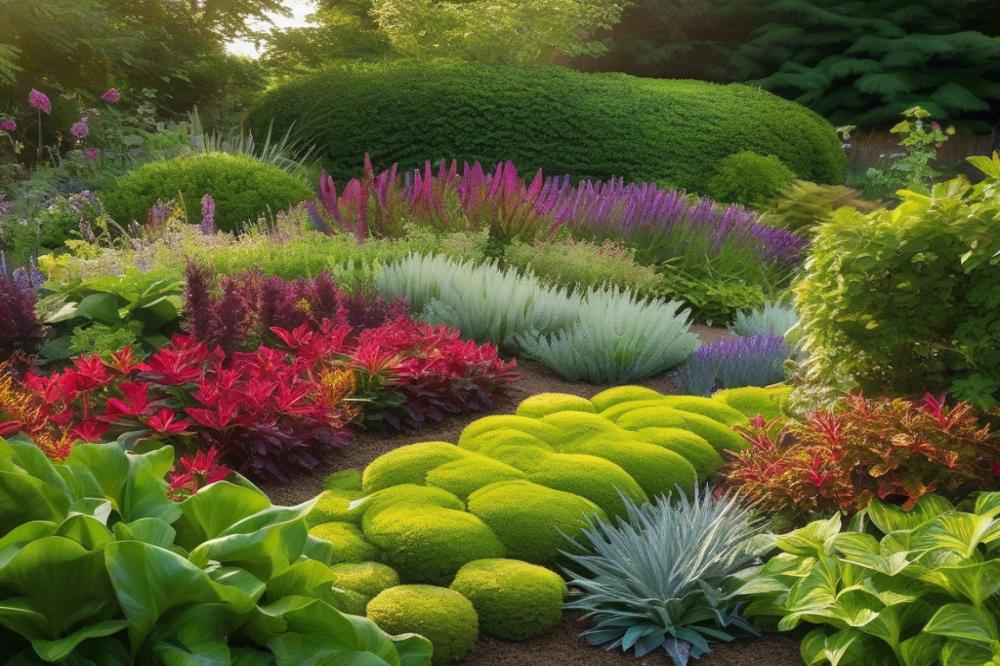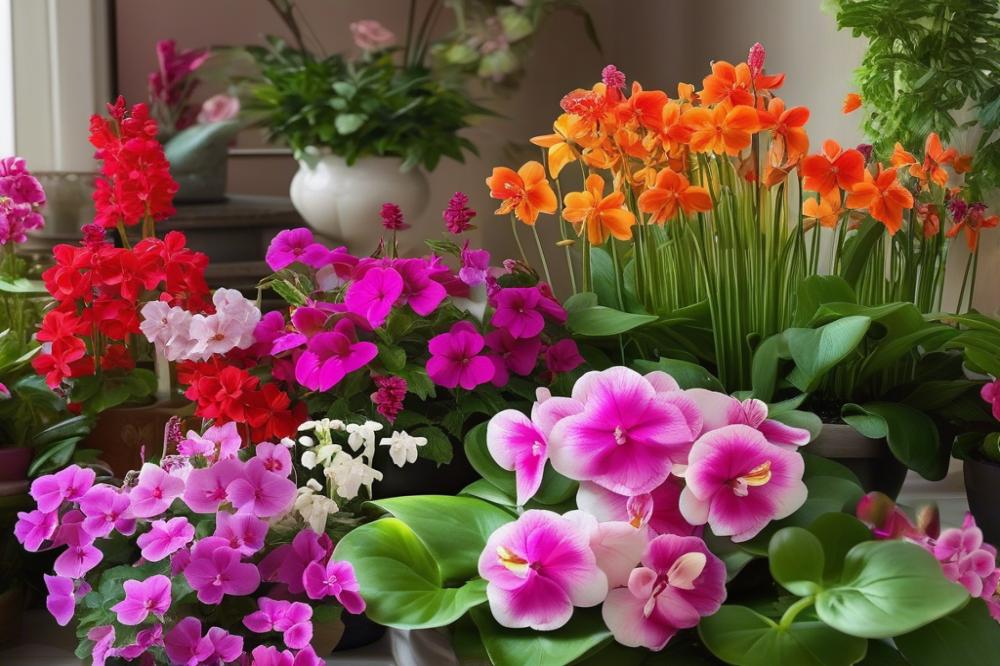Defining ground covers
ground covers refer to low-growing plants that spread across the soil surface. They create a cohesive layer that often retains moisture and suppresses weeds. These plants are essential in gardens for various reasons.
The Role of Ground Covers in garden biodiversity
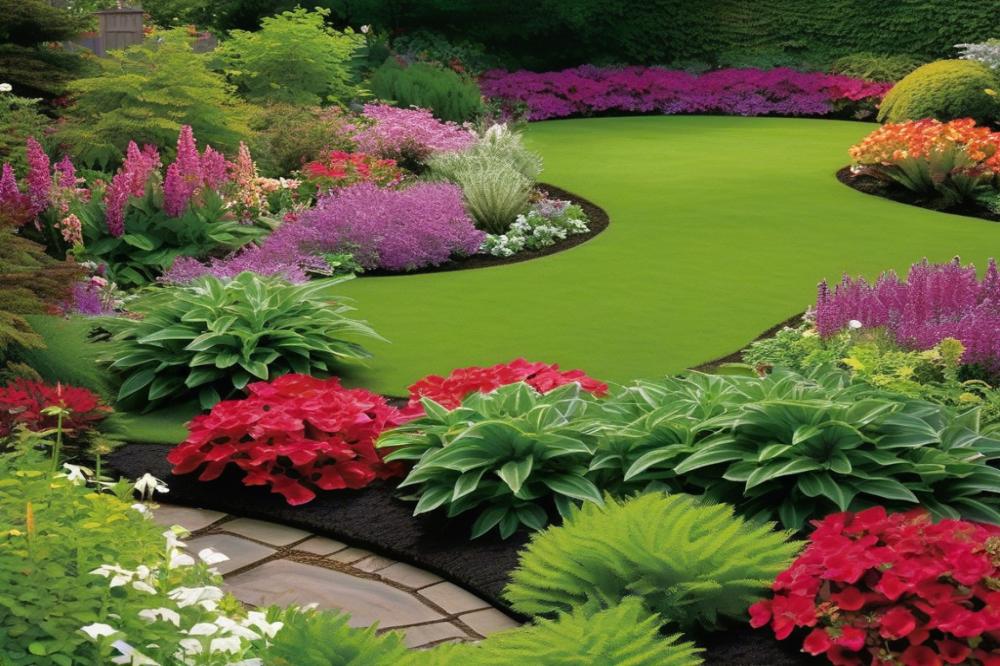

Promoting garden biodiversity is crucial for a healthier ecosystem. Ground covers can support a variety of life forms, including pollinators and beneficial insects. plant diversity enhances a garden’s resilience against pests and diseases. Moreover, these plants contribute to habitat creation, offering shelter and food for various wildlife species.
Focus on ecosystem health and Sustainable Gardening
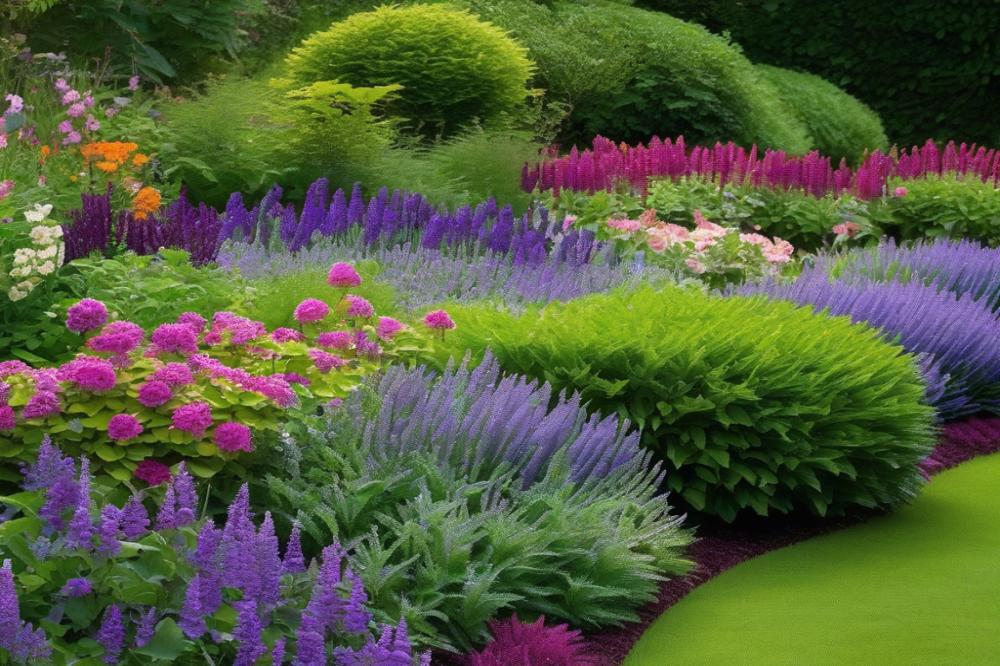

Healthy ecosystems rely on interconnected relationships. Ground covers aid in soil preservation and reduce erosion, which is vital in maintaining soil integrity. Utilizing native species can amplify these benefits further. They adapt well to local conditions and require less water. This aligns with principles of organic gardening, promoting a thriving environment.
In our article, we will explore how ground covers influence not only biodiversity but also climate resilience. Understanding their role offers insight into effective sustainable gardening practices. We will examine the various mulch benefits they provide, enhancing moisture retention and nutrient cycling in the soil. Join us on this journey to recognize the significant impact of ground covers on the natural world.
Ground Covers and ecosystem health
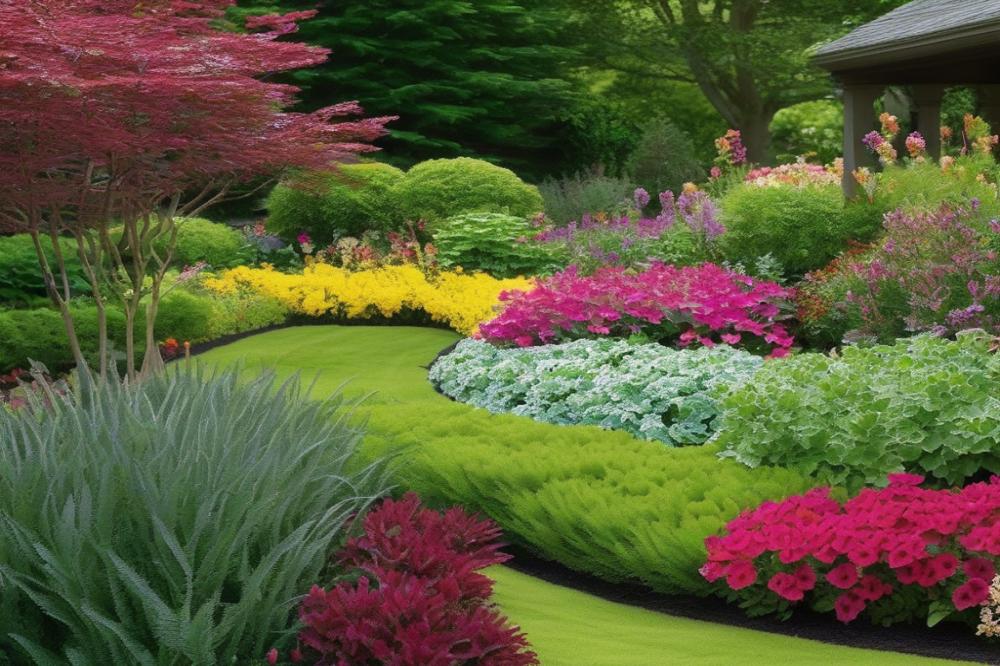

Maintaining ecosystem health is crucial for any garden. A variety of plants can create a balance that supports life. By incorporating diverse species, you attract both beneficial insects and pollinators. This boost in plant diversity makes for a vibrant and productive garden environment. Each plant plays a role, contributing to overall stability.
Soil erosion can quickly damage a garden, stripping away nutrients and structure. Ground covers act like a protective blanket over the soil. They reduce the impact of heavy rain and prevent runoff. This natural shield keeps the soil in place, promoting healthier growth for all plants. Healthier soil fosters the growth of native species that are adapted to local conditions.
Organic gardening practices enhance soil quality as well. Ground covers can improve soil structure and nutrient retention. They also serve as a source of mulch, which reduces the need for synthetic fertilizers. Not only does this promote climate resilience, but it also contributes to sustainable gardening practices. A flourishing ecosystem benefits from these organic methods that support life.
Creating habitats is essential for wildlife in the garden. With the right ground cover, you can offer shelter and food for various creatures. Birds and beneficial insects find refuge among dense foliage. These species contribute to pollination and pest control, enhancing garden productivity. The cycle of life continues, thanks to these small but important plants.
Incorporating diverse plant life can make any garden more resilient. Natural ground cover reduces the need for frequent watering. It helps in retaining moisture around the roots of neighboring plants. As the garden ecosystem strengthens, its ability to withstand pests and climate fluctuations improves. A well-balanced garden holds the key to thriving biodiversity.
Enhancing Plant Diversity
Types of Ground Covers and Their Diversity
Ground covers come in many forms. They can range from moss to low-growing shrubs. Each type plays a role in a garden. Some are more useful than others. This diversity helps create a balanced ecosystem. Using a mix of plants leads to a richer environment. Colorful flowers and leafy greens can coexist beautifully. They also attract different types of wildlife.
Importance of Native Species in Ground Cover Choices
Choosing native species is crucial. These plants are adapted to local climates and soils. They require less water and care, which supports sustainable gardening. Native plants help promote ecosystem health. Birds, insects, and other creatures rely on them for food and shelter. Pollinators thrive when these plants are present. They play a significant role in the reproduction of many plants. In this way, native species also help maintain plant diversity.
Effect of Diverse Ground Covers on Overall Plant Biodiversity
Diverse ground covers contribute significantly to a garden’s health. They can prevent soil erosion by holding the soil in place. This is especially important in areas prone to heavy rain. A variety of plants creates more habitats. Different organisms find homes in diverse environments. A heterogeneous garden supports climate resilience. Such resilience is vital in adapting to changing weather patterns. Additionally, diverse ground covers provide many benefits, like serving as a natural mulch. This helps retain moisture and regulates soil temperature, further supporting organic gardening practices.
In conclusion, creating a space filled with varied plants is beneficial for all living things within that ecosystem. Such choices promote a thriving, biodiverse garden where all forms of life can flourish.
Supporting Pollinator Populations
Creating vibrant habitats for pollinators can start from the ground up. Flowering plants can play a crucial role in providing food and shelter for bees, butterflies, and other essential pollinators. Diverse plant species support a wider array of wildlife. By planting flowering ground covers, gardeners can attract these creatures, which are vital for the health of our ecosystems.
Benefits of flowering plants extend beyond their beauty. Flowers serve as food sources for many pollinators throughout their life cycles. Long blooming periods mean more nectar and pollen for bees and butterflies. A garden full of color can lead to an increase in local pollinator populations. These insects help with the pollination of many fruits and vegetables, bolstering our food supply.
Native species offer the best support for local pollinators. They are adapted to the local climate and provide the right kind of food for specific insects. This plant diversity is key to attracting various pollinator species. A varied landscape attracts not just bees but also other beneficial insects, which can improve soil health and reduce erosion.
Sustainable gardening practices can enhance habitat creation for these crucial insects. By incorporating organic gardening methods, gardeners can avoid chemicals that harm pollinators. The use of mulch brings additional benefits. It retains moisture, sustains soil health, and encourages beneficial organisms to thrive, all contributing to a stable ecosystem.
Moreover, diverse habitats provide climate resilience. They create microenvironments that can withstand weather fluctuations. When gardeners choose a mix of flowering plants, they can help their local ecosystems adapt to change. In turn, this will ultimately benefit both the garden and the surrounding environment.
Soil Benefits and Mulch Advantages
Using certain plants can create a natural barrier that acts as mulch. This technique serves multiple purposes beyond aesthetics. It significantly improves moisture retention in the soil. When rainfall occurs, less water evaporates thanks to the coverage provided. The earth retains a more balanced level of humidity, critical for many native species.
Temperature regulation is another important aspect. Ground-level covers help keep soil cooler in the heat and warmer during cold spells. This creates a more stable environment for microorganisms and plant roots. Crops and flowers thrive when their roots are protected from extreme temperature swings. Therefore, healthier plants attract more pollinators, further enhancing ecosystem health.
In addition to moisture management, these covers offer critical benefits to soil structure. Roots from various ground plants help bind the soil together. This process reduces soil erosion caused by wind and water. Furthermore, as these plants decompose, they contribute organic matter. Over time, this buildup enriches the soil. Rich soil supports increased plant diversity, providing a haven for various forms of life.
Organic gardening practices gain significant advantages from these benefits. Sustainable gardening relies on healthy soil, which is vital for productive ecosystems. Creating habitats for beneficial insects and other wildlife promotes natural pest control. These actions enhance overall biodiversity while supporting native species within the garden. The presence of robust plant life contributes to climate resilience, aiding in the battle against drastic weather changes.
Climate Resilience through Ground Covers
Ground covers are critical in adapting to climate change. They support ecosystem health by enhancing soil stability. Many plants help maintain moisture in the soil, which is vital during dry spells. When rains come, these plants can reduce runoff and curb soil erosion.
Using native species for cover can make a garden thrive under extreme weather conditions. These native plants are more suited to local environments. They often require less water and can withstand dry periods better than non-native options. This adaptability contributes to greater plant diversity overall. A more diverse garden can better withstand pests and diseases, creating a robust ecosystem.
In periods of heavy rainfall, mulch benefits become apparent. A layer of mulch not only retains moisture but also protects the soil from being washed away. Such practices bolster vegetation and support pollinators who rely on diverse plant life. By inviting various insects and birds, a garden becomes a lively habitat. This encourages the natural balance of predator and prey.
Designing gardens with climate resilience in mind is easier than it sounds. Start by selecting plants that align with local climate conditions. Pairing different species can increase biodiversity and improve soil health. Organic gardening techniques can complement this approach, leading to sustainable gardening practices.
Creating spaces that promote habitat creation is essential. These areas can attract a variety of wildlife and increase plant diversity, enriching the ecosystem. As garden stewards, it is our responsibility to help our environment adapt. By thoughtfully integrating cover plants, we can mitigate the effects of climate change.
Creating Habitats for Wildlife
Ground covers serve as excellent shelters for beneficial insects and small animals. These plants create a protective environment, allowing species to thrive. One example is how they provide refuge for pollinators like bees and butterflies. These creatures are vital for plant diversity and ecosystem health.
Habitat creation is essential in urban areas where green space is limited. Wildlife often struggles to find safe places to nest or hunt. By planting these species, gardeners can help boost urban biodiversity. Each garden can become a tiny ecosystem that supports life. It’s important to include native species in these areas. They adapt well and are crucial for local wildlife.
Successful habitat gardens often incorporate various types of ground plants. For instance, using clover or creeping thyme can reduce soil erosion. These plants help retain moisture and enhance soil health. Additionally, they serve as organic mulch, preventing weeds from overtaking the garden. More than just aesthetics, these gardens improve climate resilience by supporting a diverse range of life.
Another interesting aspect is the impact on small animals like frogs and birds. They find cover among these plants, which makes them feel safe. This connection enhances the garden’s overall appeal and function. Observing nature in your backyard can be fulfilling and educational. Incorporating different textures and heights in your garden design fosters a varied habitat. Witnessing the interaction of life in these areas makes the effort worthwhile.
In conclusion, well-planned habitat gardens create numerous benefits. They not only attract diverse wildlife but also promote sustainable gardening practices. Engaging with the environment through these methods offers both joy and responsibility. Every small addition contributes to a healthier world for everyone.
Sustainable and Organic Gardening Practices
Integrating various types of leafy plants into sustainable gardening promotes diverse ecosystems. When native species are selected, they adapt better to local conditions. This can positively affect both soil and air quality. Additionally, they create critical habitats for local wildlife, especially pollinators like bees and butterflies. Everything in a garden works better when plants are in harmony with their surroundings.
Organic gardening thrives with these low-growing plants. They naturally suppress weeds and serve as effective mulch. This simple act can reduce soil erosion, keeping nutrients in the ground where they belong. The benefits extend beyond the garden. When gardeners practice eco-friendly methods, they contribute to broader ecosystem health.
Climate resilience is another significant advantage. Gardens that adopt sustainable techniques are better equipped to withstand changing weather patterns. This means less frequent intervention is needed, saving both time and resources. Over time, these practices lead to increased plant diversity. Varied plants create stability in a garden ecosystem, enhancing its ability to thrive.
Long-term advantages benefit both gardeners and the environment. When sustainable gardening methods are embraced, there’s less reliance on chemical fertilizers and pesticides. This approach supports the well-being of the soil and promotes healthier plant growth. The result is a thriving sanctuary for everything from small insects to larger animals.
Moreover, a rich tapestry of life can create a balanced environment. Healthy soil supports diverse organisms, allowing gardens to flourish. Connecting with nature through these practices nurtures a sense of responsibility. It invites mindfulness about the impact our choices have on the world around us.
Embracing organic gardening is about more than just growing plants. It fosters an attitude of stewardship. By choosing to plant diverse species, gardeners can play a key role in promoting biodiversity. The interconnectedness of all living things becomes clearer. Establishing a garden that prioritizes these elements paves the way for a brighter ecological future.
Closing Thoughts on Ground Covers and Garden Biodiversity
Ground covers offer significant advantages for enhancing biodiversity in gardens. They create habitats for various insects and small animals. This increased activity fosters a thriving ecosystem. Many gardeners may not realize how vital these plants can be in supporting wildlife. By providing shelter and food, they help maintain the balance needed for a healthy environment.
Choosing the right plants can lead to greater plant diversity. A variety of ground covers can attract different species, strengthening local ecosystems. Healthier ecosystems provide benefits that go beyond just aesthetics; they contribute to pest control and pollination too. Think of the native bees and butterflies that rely on these plants for nourishment. Their populations will benefit from your choices.
Engaging in practices that support ecosystem health should be a priority for all gardeners. Each decision, from plant selection to maintenance methods, impacts the garden’s overall vitality. When you select diverse ground layers, you not only beautify the space but also bolster its resilience. A garden rich in variety is one that can withstand changes in climate or pest invasions more effectively.
Now is the time for action. Consider incorporating ground covers into your gardening routine. Research suitable options for your area. Observe the insects that visit your plants, and enjoy the increased activity in your outdoor spaces. By making thoughtful choices, you can be a part of a positive change for both your garden and the local environment.

